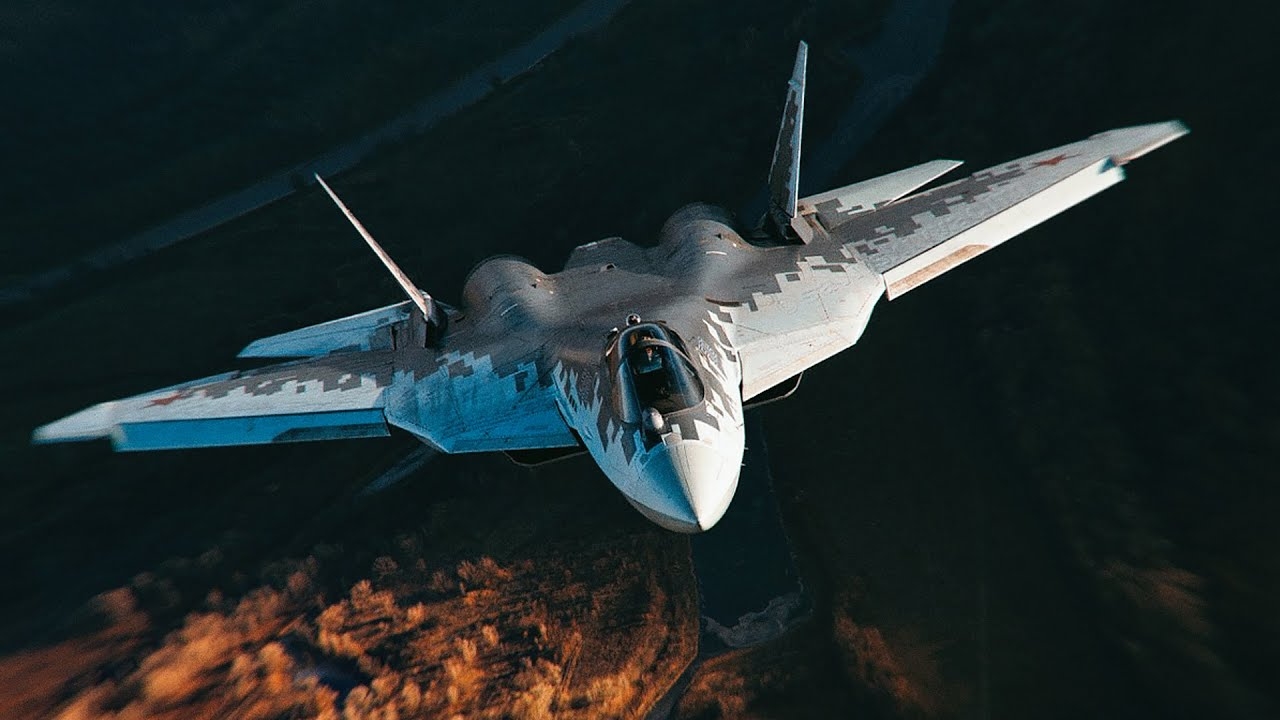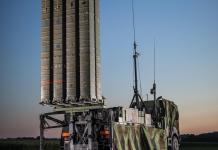The fifth-generation Su-57 fighter could soon receive missiles that can hit targets at ranges of 300 kilometers, according to officials from Russia’s defense industry.
This comes after reports in June 2022 that claimed Su-57s conducted a Suppression of Enemy Air Defense/Destruction of Enemy Air Defense (SEAD/DEAD) operation.
The rapid development of new missiles and engines for the Su-57 suggests Russia is preparing for a potential war with NATO and the US, as it sees them continuing to arm Ukraine.
Many influential Russian military bloggers on Telegram channels have argued for Russia to strike the bloc’s airborne surveillance aircraft and drones, giving Ukraine a tremendous advantage.
Some have viewed the suggestion to hit NATO territory and US assets that logistically and electronically back Ukraine’s resistance, particularly its drone attacks in Russian cities, as the only option left with Russia against deterring the West from arming Ukraine.
Naturally, such an attack will not happen by surprise but will be preceded by official warnings, possibly by President Vladimir Putin himself. This conveys Moscow’s firm intent and deters Europe/US from activating NATO’s Article 5.
Where the US/NATO’s material support to Ukraine is seen to harm Russian civilians in its territory, the legitimacy of a Russian strike is enhanced, it has been argued.
One outcome could be the US/NATO stopping military flights, beginning a backdoor negotiation with Moscow, and settling to end the war. If the US/NATO retaliates militarily or continues supporting Ukraine, Moscow will carry out its threat and shoot down an aircraft. The introduction of long-range missiles can meet this purpose.
New Ultra Long-Range Missile
A report in TASS said, quoting an unnamed source in the military-industrial complex, that the Su-57 fighter “strikes targets at a distance of 120 kilometers (in the ongoing war), and aircraft missiles are expected to arrive soon, which will be able to hit targets at a distance of up to 300 km.”

“Today, the fighter operates at a range of 120 km. Shortly, they are waiting for the arrival of aircraft missiles for high-speed air targets at a distance of up to 300 km,” the source added.
The unnamed missile could be the RVV-BD/R-37M air-to-air missile (AAM), an advanced variant of the R-37 that was introduced in 1989. Capable of engaging high and low-altitude targets at ranges of 300 km, it can be fired from both the Su-57 and the Su-35S.
Su-57 Had Been Getting Artificially Intelligent
Su-57 (Felon, as per NATO classification) is a fifth-generation Russian multifunctional fighter. The aircraft is designed to engage in air superiority/air dominance and air-to-ground warfare. The jet has a supersonic cruising speed, internal concealed weapons bays, radar-absorbing coating, and the latest onboard equipment.
These are advanced cockpit, pilot interface, and communications. Russian state media has maintained these could be Artificial Intelligence (AI)-enabled technologies. “Intellectualization of the Su-57 systems allows it to take on some of the pilot’s functions, including piloting and training in using weapons,” said the report.
A TASS report in February revealed the Su-57s received what read like an Artificial Intelligence-Machine Learning (AI-ML)-enabled sensor fusion and data-linking. The device offered “intelligent support to help the pilot decide under time pressure (and) help pilots in a pair (to) quickly interact (for tactical) tasks (like) target distribution, choosing an attack trajectory, determining the moment of the missile launch and the moments of applying interference to an enemy fighter.”
In April, Rostec Corporation, the holding company of all Russia’s state-owned arms developers, including the Sukhoi Design Bureau and the United Aircraft Corporation (UAC), claimed to have developed an AI-enabled communication system for the Su-57.
“Ruselectronics has developed onboard digital communication tools using artificial intelligence technologies. It will improve the quality of information transfer between aircraft and ground complexes,” the corporation said.
Developed by NPP Polet and operating in the High Frequency (HF) and Very High Frequency (VHF) ranges, it uses cognitive radio technology — a dynamic method of programming or configuring — which enables a communication system to use the best wireless channels in its vicinity, thereby making it immune to interference.
“The equipment ensures the reliability of information transmission due to noise-immune coding, interleaving of symbols in the message, common time synchronization in signal processing, the possibility of simultaneous transmission of messages over parallel channels, increasing the range of stable communication, as well as the use of artificial intelligence technologies,” the corporation further said.
Can Su-57 Be Used Against US, NATO?
According to RIA Novosti, the Su-57 was used in Ukraine in a June 2022 Suppression of Enemy Air Defense/Destruction of Enemy Air Defense (SEAD/DEAD) operation safely from within Russian territory. This suggests that it also might be used for such a role again.
This operation saw a flight of four Su-57s “(combined) in a single information space that increased the efficiency of identifying and hitting targets.” The quartet was “linked to a single information network to destroy air defense systems through automatic communication systems, data transmission, navigation and identification in real-time.”
The Su-57 has two large internal weapon bays mounted in tandem between the engines and two side bays for short-range air-to-air missiles. The ten internal and six external hardpoints can carry R-74M Archer and R-77M Adder air-to-air missile (AAM); Kh-38M air-to-surface missiles; Kh-31AD and Kh-35U anti-ship missiles and; Kh-31PD and Kh-58UShK anti-radiation missiles.
A previous analysis in the EurAsian Times concluded that Russia is likely to employ the Su-57 for stand-off ground strike missions and avoid entering enemy territory to prevent detection by US/NATO E-3 Sentry Airborne Early Warning (AEW) planes that are patrolling in the bloc’s territory at all times.
Moreover, other fighters like the Su-35S, Su-30SM, its newly introduced Sirius Medium-Altitude Long-Endurance (MALE)-class reconnaissance-strike drone, and one each from the limited numbers of its Tu-214R ISR/EW and A-50 AEW aircraft flying at different locations can keep a hawk’s eye on the airspace and the ground.
It is not too far-fetched to imagine that even ground-based S-400 radars would be scanning the airspace. This is to fully guarantee that a Su-57 does not come under fire from either Ukrainian SAMs or NATO aircraft.
- The author can be reached at satamp@gmail.com
- Follow EurAsian Times on Google News




